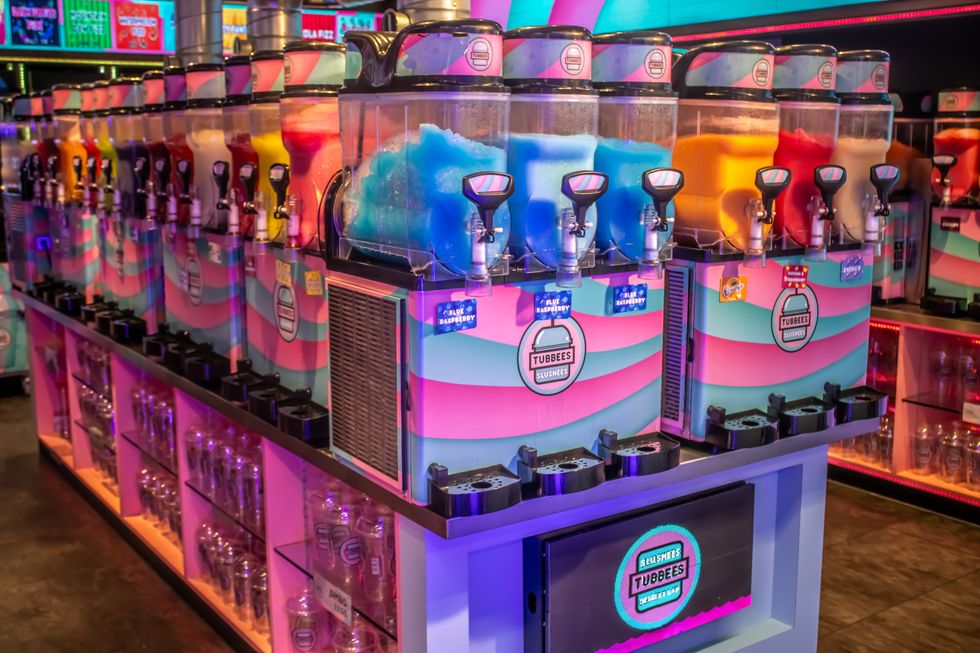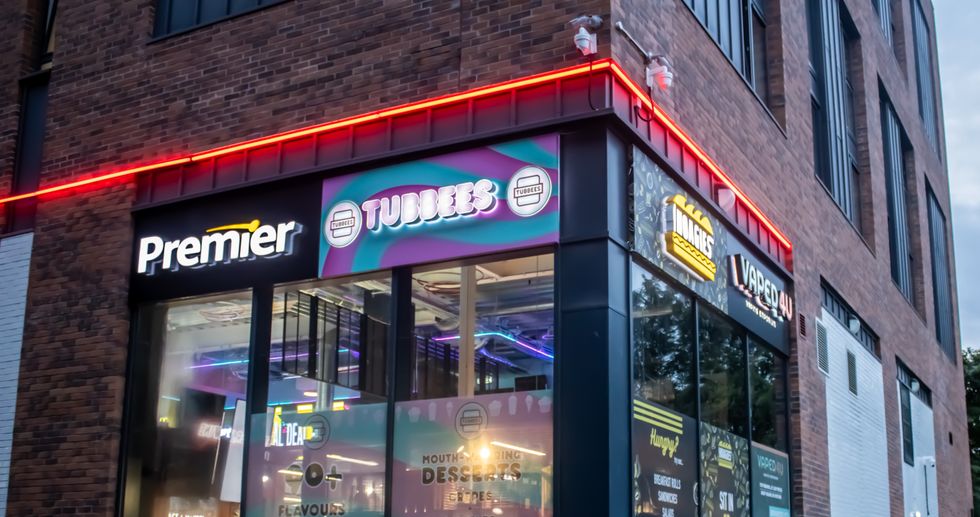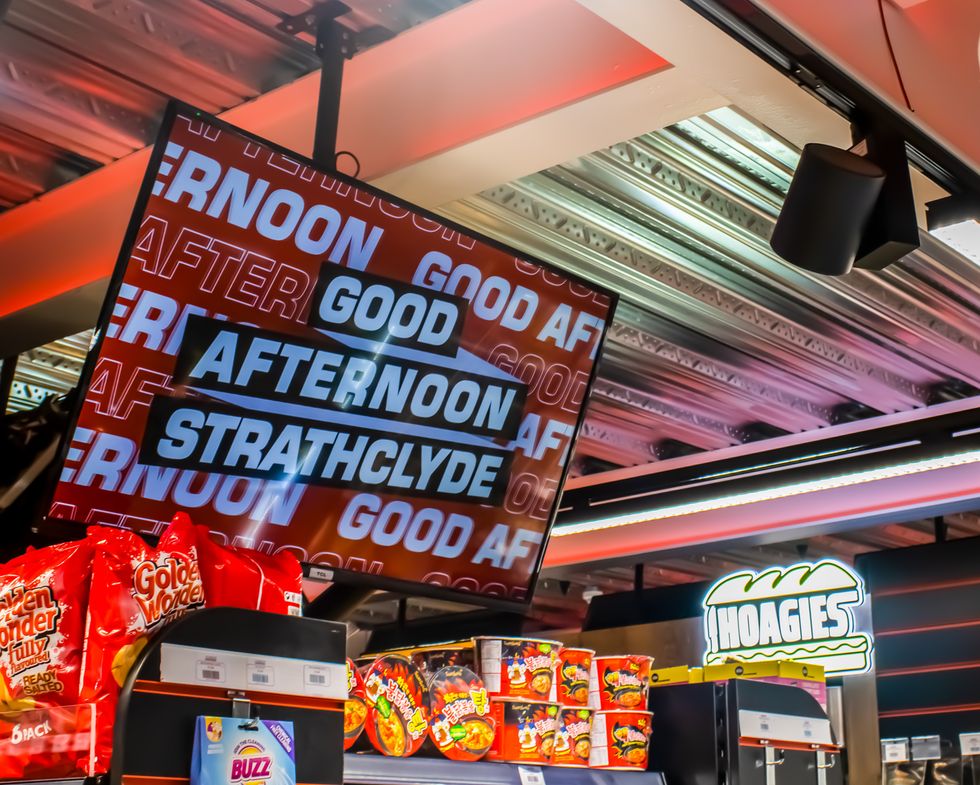Convenience stores have come far. Today, some of the UK’s top convenience stores are at par with larger supermarkets and with extra leverage on convenience and unique, tailored experiences, some are even better.
A perfect face of such store which is bringing fun to convenience is RaceTrack.
While RaceTrack operates a dozen stores across Scotland, RaceTrack Pitstop Premier store in Strathclyde stands out due to its rapid growth and unique offerings, a testament to the vision of the next-generation star of Sud family Guna Sud, who discovered the site while living in the building as a student.
His insight into retail business as well as foresightedness of serving a vibrant student community laid the groundwork for what has become a thriving destination store within a mere three years.
Speaking with Asian Trader, retail veteran Shamly Sud dived in detail about the store’s origin, the idea and the future plans.
"My eldest son stayed in the building for a year when he went to Uni," Shamly Sud explains. "He saw the demand, especially with the large student population and limited convenience options."
The store finally opened in October 2021, after a massive refit lasting nine months and £1million investment.
Though a recent addition to the RaceTrack portfolio, the Strathclyde location carries all the signature elements that define the brand.
From its unique in-house brands—Tubbees for dessert, VAPED4U, Hoagies, and, of course, RaceTrack itself—the store sets itself apart through an inviting, destination-style experience.

Shamly explained, “We aim to make convenience more fun and inviting, creating more of a destination store, separating us from competition and giving customers a unique shopping experience.
“We are also very competitively priced across the store, running deep discounts on our new power bays, with an offering that competes with likes of Tesco, Aldi and so forth, again, providing something unique for our customers. We basically pass on any savings we find.”
The store's interior is designed with flair, and each brand occupies its own distinct section, from Tubbees’ colorful dessert corner to VAPED4U’s vast vape section, which boasts over 3,000 SKUs.
This dynamic model is mirrored across the RaceTrack chain, where innovation is constant. RaceTrack stores distinguish themselves through exclusive partnerships and custom features that go beyond standard retail.
In a first for an independent chain, Strathclyde’s RaceTrack hosts bespoke POS and displays from brands like Elf Bar and Gold Bar.
She said, “We are constantly making changes, analysing each bay, changing layouts, working with suppliers to create new bespoke displays, like our recent agreement with Elf Bar and Gold Bar. We are currently the only independent retail chain with such an agreement.
"Both brands have provided bespoke pos and displays for this store, and their own media agreements.”
RaceTrack currently has 11 stores within the group and a 12th one is about to be opened soon.
Yet, not all challenges are within the business's control.
Like most of their peer, the Sud family is also facing the ongoing retail crime epidemic. The lack of consistent support from local authorities exacerbates the problem, with incidents of theft and violence affecting daily operations.
"Every day brings new security challenges," Shamly said. "The violence escalates, and the support from authorities just isn’t there."
Despite the challenges, the Strathclyde Pitstop Premier is deeply committed to community engagement.
"Each month, we donate to a local charity, and we provide free fruit for schoolchildren through the Healthy Living Scotland initiative," Shamly shared.
The store’s proximity to several universities has spurred partnerships that benefit the student community, from event sponsorships to recruitment opportunities.
"We’re the only business offering this level of involvement with the local student population," she added.
For Shamly, retail is more than a profession; it’s a legacy. Her journey into the industry began in childhood, assisting her parents in their family business.
Even as her family life expanded, Shamly never shied from challenges. After having two children and the youngest just a few months old, she embarked on a new path, completing a postgraduate degree to become a mathematics teacher.
But it was the 2008 financial crisis that truly cemented her return to retail. Working alongside her husband, initially in property renovation, they found that retail offered a stability that property could not.
As she put it, "I couldn’t purchase goods with bricks. Cash was essential to survive day to day."
Together, they made a bold move and opened their first forecourt, Braeside Services, in 2011. This decision marked the beginning of a new chapter, fueled by a unique partnership.
"My husband and I have a fantastic relationship," she shares. I am often the face, negotiating with suppliers, while he ensures everything runs smoothly behind the scenes."
This synergy is what drives their success. In Shamly’s words, "We work as a team," a formula that’s become central to their business philosophy. But beyond teamwork, Shamly brings her own unique strengths to the table.
And her motto? A straightforward yet powerful one: "Just get on with it."
Looking ahead, plans are underway to give the store a chilled alcohol room.
“Even though the store is new it doesn't stop us from further reinvesting. We are currently looking at introducing ordering hot food on a tablet and having a serve over for it at the till.
"The sales on the food to go are increasing all the time and we want to raise it to it's full potential,” she said.
Under the Sud family’s leadership, it exemplifies how a well-thought-out, community-centric modern and innovative approach can transform a convenience store into a beloved local destination and a model to look upon.









